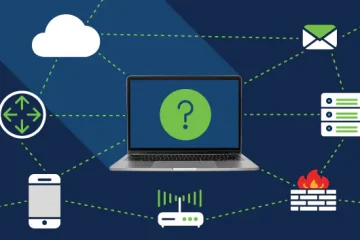In today’s fast-paced digital landscape, the role of robust IT monitoring strategies cannot be overstated. Businesses that stay ahead of IT issues and efficiently manage their network operations can significantly improve their operational efficiency and reliability.
This article explores advanced IT status monitoring strategies that can help elevate your business operations, ensure continuous system performance, and enhance your cybersecurity posture.
The importance of proactive IT monitoring
Proactive IT monitoring is crucial for any business that relies on technology for its day-to-day operations.
By continuously scanning systems for anomalies and potential issues, companies can prevent disruptions leading to downtime, data breaches, or loss of customer trust. The key advantage of proactive monitoring lies in its ability to detect problems before they escalate, allowing IT teams to address them swiftly and efficiently.
One effective strategy is implementing a comprehensive dashboard that provides real-time insights into the health of all IT systems. This centralized overview enables IT personnel to stay on top of the status of all components, from servers and databases to applications and security systems. With these insights, businesses can make informed decisions quickly, minimizing the impact of any IT issues.
Enhancing IT operations with automation
Automation plays a pivotal role in modern IT monitoring. By automating routine checks and responses, businesses can free up valuable IT resources to focus on more complex tasks.
Automation tools can perform regular system scans, update and patch management, and even handle certain security protocols automatically. This increases the efficiency of the IT department and reduces the likelihood of human error, which can lead to security vulnerabilities.
For instance, automated alerts can notify IT personnel immediately when irregularities are detected. These alerts can be customized based on severity levels, ensuring that high-priority issues are escalated appropriately and dealt with promptly.
Leveraging IT audit services for enhanced security
Utilizing IT audit services is another critical strategy for businesses looking to bolster their IT monitoring capabilities. These services thoroughly examine the company’s IT infrastructure, revealing vulnerabilities and inefficiencies that might not be apparent during day-to-day operations. An IT audit can offer valuable insights into the effectiveness of existing IT policies and procedures, providing a roadmap for improvement.
During an audit, experts assess various aspects of IT operations, including security practices, software management, and data governance. This comprehensive evaluation helps ensure that all systems comply with relevant laws and regulations, protecting the business from potential legal and financial penalties.
Local IT support: A key asset in IT monitoring
Having robust local IT support is vital for effectively implementing advanced monitoring strategies.
Local support teams possess an in-depth understanding of the specific IT landscape of a business, which is crucial for tailoring IT monitoring solutions to meet unique organizational needs. They are also instrumental in executing the quick on-site responses required for resolving complex issues, ensuring minimal downtime.
Depending on the company’s size and requirements, local IT support teams can collaborate closely with in-house IT departments or function as an outsourced service. Either way, they provide the expertise and hands-on support essential for maintaining a healthy IT environment.
Final thoughts
Mastering IT management is crucial for achieving lasting success in today’s business environment. By leveraging managed IT support, overcoming challenges, and integrating advanced technologies such as real-time IT monitoring and cybersecurity solutions, companies can enhance operational efficiency, secure their digital assets, and ensure seamless communication.
Choosing the right IT management partner like Sterling Technology enables your business to unlock the full potential of technology to foster growth, drive innovation, and enhance customer satisfaction. This proactive approach ensures that your IT management strategy remains dynamic and capable of adapting to future challenges and opportunities.



